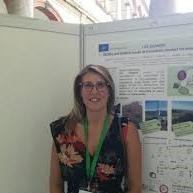Research on Sludge Treatment
A special issue of Water (ISSN 2073-4441). This special issue belongs to the section "Wastewater Treatment and Reuse".
Deadline for manuscript submissions: closed (30 April 2021) | Viewed by 4435
Special Issue Editor
Special Issue Information
Dear Colleagues,
This Special Issue aims at presenting the future developments and the state-of-the-art of the current research on sludge treatment.
In the last recent years, the concept of circular economy and sustainability, have marked significant changes in the wastewater management/research sector, given that sludge is now considered a valuable resource, and not a waste. With this paradigm shift, it is crucial to adopt strategies that allow recovering the resources, (e.g., energy, nutrients and bio-based substances, ...), and at the same time, mitigating their potential harmful content.
Particular attention will be given to papers related to the recovery of energy (gas, electricity or heat), nutrients and other materials (e.g. Bioplastics, fertilizers, cellulose, personal health products). Articles dealing with the integration of green solutions (e.g., nature-based solutions) in the traditional sludge management are also welcome. Contributions from both lab-scale research projects to experiences from full-scale applications on different kind of sludges (e.g., domestic, municipal, agroindustrial) will be welcome. Review papers summarizing the existing knowledge and technological status of different management strategies are also welcome.
Dr. Eleonora PeruzziGuest Editor
Manuscript Submission Information
Manuscripts should be submitted online at www.mdpi.com by registering and logging in to this website. Once you are registered, click here to go to the submission form. Manuscripts can be submitted until the deadline. All submissions that pass pre-check are peer-reviewed. Accepted papers will be published continuously in the journal (as soon as accepted) and will be listed together on the special issue website. Research articles, review articles as well as short communications are invited. For planned papers, a title and short abstract (about 250 words) can be sent to the Editorial Office for assessment.
Submitted manuscripts should not have been published previously, nor be under consideration for publication elsewhere (except conference proceedings papers). All manuscripts are thoroughly refereed through a single-blind peer-review process. A guide for authors and other relevant information for submission of manuscripts is available on the Instructions for Authors page. Water is an international peer-reviewed open access semimonthly journal published by MDPI.
Please visit the Instructions for Authors page before submitting a manuscript. The Article Processing Charge (APC) for publication in this open access journal is 2600 CHF (Swiss Francs). Submitted papers should be well formatted and use good English. Authors may use MDPI's English editing service prior to publication or during author revisions.
Keywords
- Sludge Treatment
- wastewater management
- Environmental Remediation
- recovering resources
- nature-based solutions
- integration of green solutions
Benefits of Publishing in a Special Issue
- Ease of navigation: Grouping papers by topic helps scholars navigate broad scope journals more efficiently.
- Greater discoverability: Special Issues support the reach and impact of scientific research. Articles in Special Issues are more discoverable and cited more frequently.
- Expansion of research network: Special Issues facilitate connections among authors, fostering scientific collaborations.
- External promotion: Articles in Special Issues are often promoted through the journal's social media, increasing their visibility.
- Reprint: MDPI Books provides the opportunity to republish successful Special Issues in book format, both online and in print.
Further information on MDPI's Special Issue policies can be found here.





